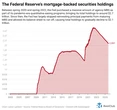One of the most vital drugs with a high price tag will get dramatically more affordable next year – if you live in California.
California will start selling insulin next year after striking out on its own in a bold deal to lower the cost of prescription drugs, making it the first state in the nation to do so. The state will offer low-cost insulin through CalRx, a state program designed to provide affordable life-saving drugs in California.
“California didn’t wait for the pharmaceutical industry to do the right thing — we took matters into our own hands,” California Governor Gavin Newsom said in a press release. “… No Californian should ever have to ration insulin or go into debt to stay alive — and I won’t stop until health care costs are crushed for everyone.”
Through the California program, insulin will be available starting in 2026 to state pharmacies for $45 for a five pack of insulin pens, with a suggested retail price of $55. The drug will be available to everyone at the set price, regardless of their insurance plan.
Production of the drug will be handled by nonprofit pharmaceutical company Civica Rx through a $50 million deal the state struck in 2023. The partnership will eventually produce three forms of insulin, equivalent to namebrands Lantus, Humalog, and Novolog. The program is starting with glargine, a generic version of the drug Lantus, which will be available in January. The CalRx insulin will be produced at Civica’s manufacturing plant in Virginia.
CalRx was first announced in 2019 as an executive order and later signed into law as the California Affordable Drug Manufacturing Act of 2020. Prior to the insulin news, CalRx successfully drove down the cost of Naloxone, which can reverse opioid overdoses, selling twin packs of the drug for $22.50 over the counter.
Cost of insulin as a political issue
The price of insulin comes frequently in politics, whether as a political bargaining chip or a campaign promise. That’s because in the U.S., the life-saving drug is astronomically expensive compared to how much it costs diabetes patients in other countries around the world. While insulin is cheap to manufacture, costing only around $4 per vial, it can wind up costing consumers hundreds of dollars every time they fill their prescription. That high cost can lead people with diabetes to skip and ration their doses, putting their health at serious risk in the process.
After hitting historic highs, the price of insulin in the U.S. is finally coming down. Legislation and executive action over the past five years have put a cap on the cost of insulin for Medicare enrollees. The big three manufacturers have also made their own price cuts, extracting less profit from the life-saving drugs as national frustration and regulation targeting high insulin costs became impossible to ignore.
States band together on health policy
Blue states are going their own way more during the second Trump administration, pooling their economic power and shared vision to set policies. California’s good news on insulin pricing comes one day after the state announced that it would join a first-of-its-kind coalition bringing together blue states on public health policy. The initiative, known as the Governors Public Health Alliance, aims to provide science-backed alternative public health policies to those set by the federal government under Health and Human Services Secretary Robert F. Kennedy Jr. California will join Washington, Hawaii, Massachusetts, New York, Oregon, Connecticut, Rhode Island, Delaware, Maryland, New Jersey, Colorado, Illinois, North Carolina and Guam.
“California is proud to help launch this new alliance because the American people deserve a public health system that puts science before politics,” Newsom said in the announcement. “As extremists try to weaponize the CDC and spread misinformation, we’re stepping up to coordinate across states, protect communities, and ensure decisions are driven by data, facts, and the health of the American people.”










No comments